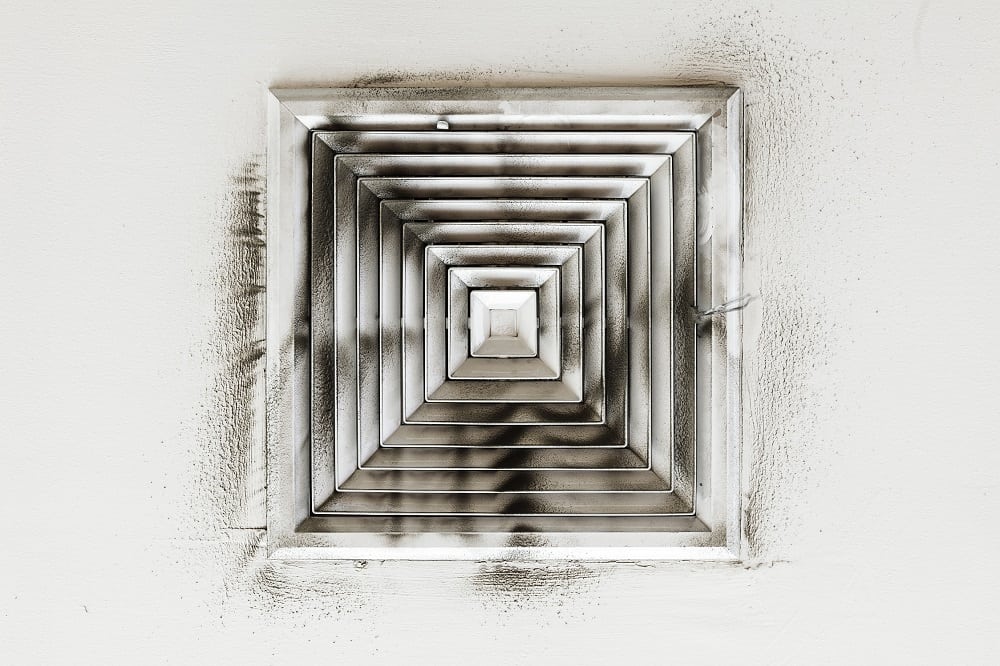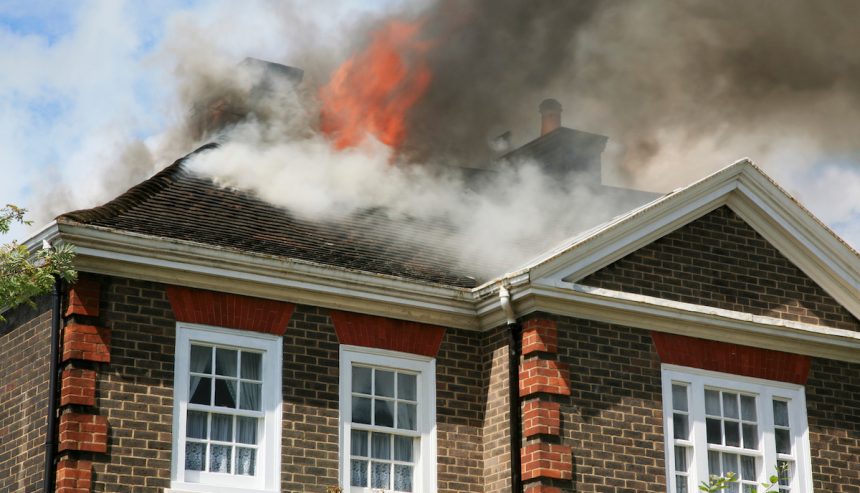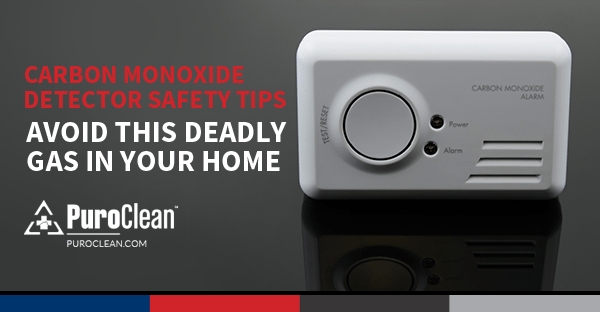Table of Contents
Removing smoke odor and recovering contents after a fire in a home is a difficult task. When it comes to complete smoke smell removal and content recovery, the remediation process must include specialized equipment and techniques that only a professional disaster restoration company can provide. Thus, we don’t advise homeowners to tackle this task themselves. Check out the steps involved in smoke damage restoration below.
The Types of Smoke Odor
Smoke results from incomplete combustion and consists of persistent particles (soot), oils, and gases. The pungent smoke odor comes from volatile molecules that materials release when burning.
Smoke odor can result from burning protein (meat), natural materials (wood, cotton, etc.), synthetic materials (e.g., plastic, nylon), and more. With so many substances that can burn, the restoration process requires technical knowledge and complex procedures.
How to Remove Smoke Smell From Properties
1. Removing the source of the problem
The first and most important step in smoke odor removal is to remove the source of the odor(s). This involves removing burnt items, such as cabinets, furniture, drywall, and non-salvageable contents. The items can be either discarded or restored, depending on their condition.
2. Cleaning the salvageable contents
Technicians clean the salvageable items with appropriate products. They pressure wash, scrub, and disinfect exterior surfaces like walls, windows, and decks. Interior walls and hard surfaces can be cleaned with mild soap and then rinsed thoroughly. Professionals will also clean inside cabinets, drawers, and closets, and wash household items, too. Carpets, furniture, and upholstery are usually cleaned off-site. Check out how to clean fabrics after a home fire.
3. Cleaning the air ducts

Smoke, soot, and odors from a fire will penetrate the duct system and any dust or other particles inside of that system. Thus, cleaning the ducts early in the smoke smell removal process is essential to prevent the HVAC system from re-contaminating areas that have been cleaned. Of course, only professionals should clean the ductwork as it involves specialized equipment and procedures.
4. Removing the smoke smell
The final stage is removing the lingering airborne odor. To accomplish this task, a variety of techniques can be utilized, but they all share a common goal — complete smoke odor removal. Here are some examples of proven systems:
- AIR SCRUBBING: A technician will use a high-efficiency particulate arrestor (HEPA) air scrubber which can remove 99.97% of particulates from the air. Removing these airborne particulates removes additional source materials for odors.
- THERMAL FOGGING: Fogging uses a petroleum-based deodorizer emitted via a thermal fogging unit. It fills the affected area with a mist-like deodorizer. Fogging counteracts odorous molecules by using fragrance modification for permanent odor neutralization. Prior to fogging, technicians put out all flames. Everyone in the treatment area must wear respiratory protection equipment or leave the area.
- VAPOR MODIFICATION: This method uses an aromatic compound vaporized from a sealed plastic container then dispensed into the air by a fan or blower. The mineral oils used in this process are non-toxic, non-oily, non-flammable, and non-explosive. Therefore, customers can choose to remain in or near an area during the smoke smell removal process. The deodorizer also penetrates affected porous contents like upholstery and drapery.
- OZONE GENERATION: This is one of the most popular and familiar processes for removing airborne smoke odor molecules, including hard-to-neutralize protein smoke. Ozone is a powerful oxidizer that neutralizes odorous molecules by releasing additional oxygen into the air. Ozone, while an effective odor remover, is not an “air purifier.” Customers should not be present when an ozone generator is in operation. Personnel should enter the treatment area only briefly to turn the ozone generator on or off. Ozone works best in a controlled environment, such as an ozone chamber. In there, odorous contents can be subjected to 24 to 48 hours of ozone gas.
How to Clean Smoke Damage From Contents
1. Safety comes first

The first concern in every fire damage cleanup situation is safety. Restoration professionals will take steps to make sure all workers and others entering a structure after a fire are safe. It is important that the structure is safe before the evaluation and restoration.
Also, keep in mind that, after a fire, indoor air contains floating smoke and soot particles. Smoke/soot particles are Products of Incomplete Combustion (PIC). These are carcinogens and are dangerous. When cleaning up smoke/soot, it is important to wear a respirator, such as an N-95 or N-100. Using gloves and other protective clothing will also protect against soot exposure. Ventilation is key to letting the contaminants in the air outside.
2. Evaluating the damaged items
The next step is to determine which items should be cleaned and where, as well as which items to discard. Cost and antique value are key consideration factors. Professionals evaluate the affected items as quickly as possible, as soot can produce further damage in a matter of hours or days, depending on the material.
In many cases, items that have not been damaged directly by the fire or by excessive heat should not be discarded. Luckily, we know how to clean smoke damage from salvageable items.
Most textile goods like draperies and bedding will be taken to a laundry or dry-cleaning facility. Other restorable items, such as furniture, can be cleaned within the home or sent to an outside location.
Food items must be treated with caution. Any open items should be thrown away. Unopened items in original packaging that were away from the heat can be considered safe. If there is any doubt, throw the items away.
Keep in mind that melted or discolored plastic items can’t be restored, only cleaned.
3. Creating an inventory
If a “pack out” (taking contents to a cleaning facility) is necessary, our technicians will keep careful records for items taken, location of the items, and condition of the items when removed. In other cases, we may determine that conditions allow for cleaning and storing the contents within the home, or perhaps the garage. An inventory of all discarded items is essential to receiving compensation when filing an insurance claim.
4. Cleaning the affected contents
Our restoration specialists will perform testing to determine the appropriate product and mix ratio to use on each item. Today’s restoration professionals will use environmentally friendly products for all cleaning and restoration processes. This is an important consideration when choosing a restoration company.
Then, they begin to gently remove soot from each restorable item — either in the home or at another location. The cleaning method depends on the item, such as furniture, kitchen utensils, dishes, toys, clothing, bedding, draperies, and more.
5. Removing the odor
Odor issues come with smoke/soot damage. After the cleaning process, most of the smoke odor will be eliminated. Yet, if there is still a small odor, we may add an additional step to the restoration process. This could include ozone or hydroxyl deodorizing, as appropriate. Learn more about smoke odor removal.
For Fire Damage Restoration, Contact the PuroClean Certified Restoration Specialists!
When the contents of a home are damaged by smoke/soot, mitigating the fire damage, cleaning, removing smoke odor, and restoring the contents to their pre-loss condition is a job for restoration professionals. Call PuroClean Certified Restoration Specialists for professional smoke damage restoration. We have the necessary training, equipment, and experience to rescue and restore your home after smoke damage.
Fires are one of the biggest disasters in the US. But while some fires are a total loss, not all of them are. Sometimes, fires are smaller in scale, causing partial structural damage. In these cases, the contents of the home can usually be salvaged. But even then, there is usually significant smoke/soot damage to the contents of the home. When dealing with home fire damage, always hire a professional restoration company, such as PuroClean Certified Restoration Specialists, that knows how to clean smoke damage from house contents. Here’s how we do it.




 PuroClean Certified Restoration Specialists
PuroClean Certified Restoration Specialists